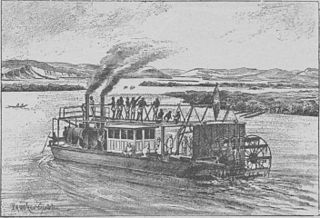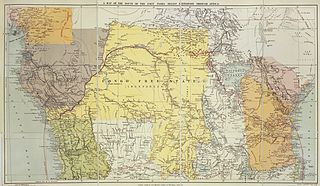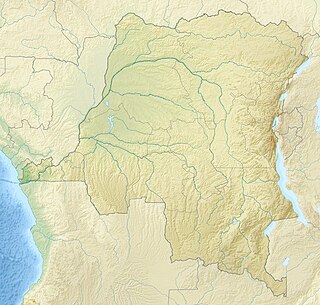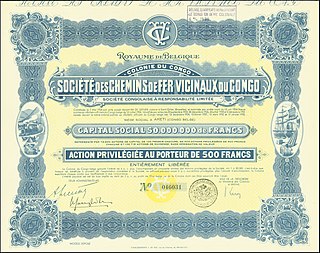Buta Territory is a territory in Bas-Uele District, Orientale Province, Democratic Republic of the Congo. The administrative capital is located at Buta.

Cataractes District is a district located in the Kongo Central province, in the Democratic Republic of the Congo. It dates back to the days of the Congo Free State and the Belgian Congo.

Kwango District was a district of the Congo Free State, Belgian Congo and the Democratic Republic of the Congo. It went through various changes in extent. It roughly corresponded to the present provinces of Kwilu and Kwango.

Aruwimi District was a district of the Congo Free State and Belgian Congo. It went through various changes in extent before being absorbed into other districts.

Stanleyville District was a district of the Belgian Congo and Democratic Republic of the Congo. It went through various changes in extent. Between 1933 and 1963 it had roughly the same extent as the current Tshopo province.

Uele District was a district of the Congo Free State and the Belgian Congo. It roughly corresponded to the current provinces of Bas-Uélé and Haut-Uélé.

Stanley Pool District, later named Moyen-Congo District was a district of the Congo Free State and Belgian Congo. It disappeared in a reorganization of 1914.

The Districts of the Congo Free State were the primary administrative divisions of the Congo Free State from 1885 to 1908. There were various boundary changes in the period before the Congo Free State was annexed by Belgium to become the Belgian Congo.

The Ubangi-Uélé District was a district of the Congo Free State between 1888 and 1895. It was later split into the Ubangi District to the north and Bangala District to the south.

The Rubi River is a left tributary of the Itimbiri River, which forms where the Rubi joins the Likati River.

Ekwangatana is the location of a post established by Belgian officers in what is now Bas-Uélé province in the Democratic Republic of the Congo.

The Bima River is a river of Bas-Uélé province in the Democratic Republic of the Congo. It is a left tributary of the Uele River.

Ibembo is a village on the Itimbiri River in the Tshopo province of the Democratic Republic of the Congo.

Amadi is a town in the Bas-Uélé province of the Democratic Republic of the Congo (DRC).

The Makongo River is a river of the Democratic Republic of the Congo. It is a left tributary of the Bomokandi River, which in turn is a tributary of the Uele River.

The Société des Chemins de Fer Vicinaux du Congo was a railway company that operated the narrow gauge Vicicongo line and provided trucking services in the northeast Belgian Congo, and then in the Democratic Republic of the Congo between 1924 and 1974. It provided transport for agricultural goods produced in the northeast that were shipped on the Congo River to to Léopoldville (Kinshasa). After independence in 1960 there were civil disturbances and the railway was poorly maintained. The company was taken over by the state in 1974. Later there were further disturbances in which the stations were destroyed and the rolling stock used as a source of metal. The track is decrepit and no longer usable.

Titulé is a village in the Bas-Uélé province of the Democratic Republic of the Congo. It was the terminus of a branch of the defunct Vicicongo line, a railway. The town is the center of a health zone and has a general referral hospital.

Andoma, formerly called Liénart, is a village in the Bas-Uélé province of the Democratic Republic of the Congo. It was a junction on the defunct Vicicongo line, a railway.

Libongo or Libogo is a village in the Bas-Uélé province of the Democratic Republic of the Congo. It was a stop on the defunct Vicicongo line, a railway.

Zobia is a village in the Bas-Uélé province of the Democratic Republic of the Congo. Zobia Gauche was a station on the defunct Vicicongo line, a railway.









